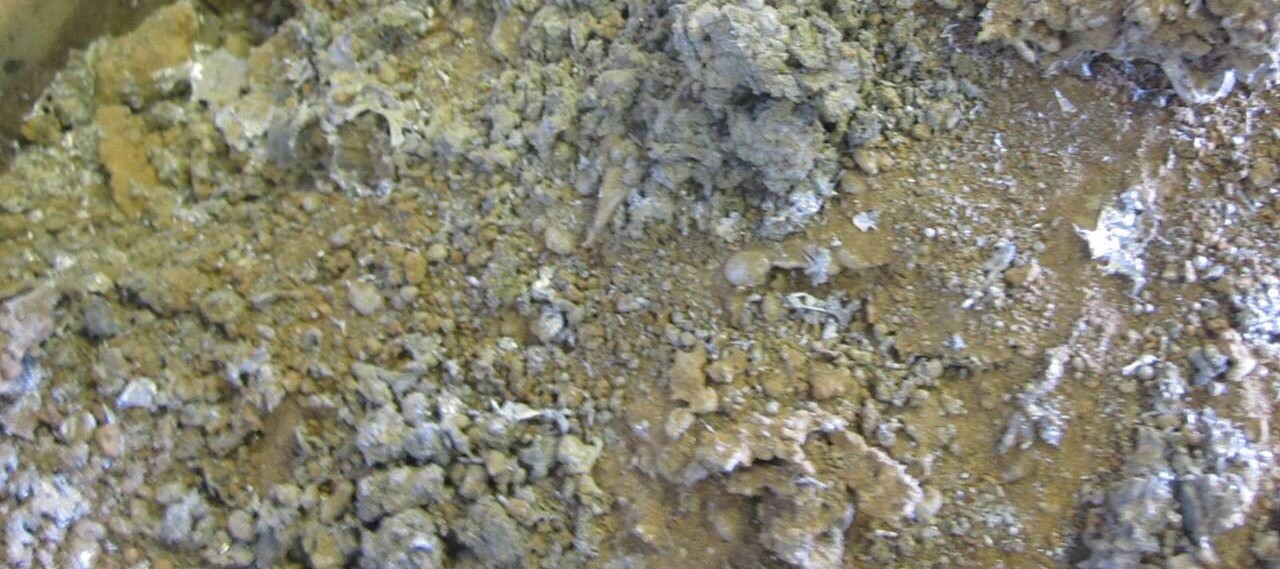
What is zinc skimming?
Zinc skimming is a by-product generated during the galvanizing process, similar to zinc dross but typically less rich in metallic zinc. It forms as a layer of impurities and oxidized material that accumulates on the surface of molten zinc baths used to coat steel or iron. This “skimming” is removed from the surface to maintain the purity of the molten zinc.
The key components of zinc skimming include:
- Zinc Oxide (ZnO): The main component, formed by the reaction of molten zinc with oxygen in the air.
- Zinc Chloride (ZnCl2) or other flux residues, if fluxes are used during the galvanizing process.
- Iron particles or other impurities, depending on the material being galvanized.
Unlike zinc dross, which is denser and may contain more metallic zinc, zinc skimming is generally lighter and has a higher proportion of zinc oxide and impurities. Both zinc skimming and zinc dross can be recycled, but the processes to recover zinc from them differ slightly based on their compositions.
How to recycle zinc skimming?
Zinc skimming process involves the collection and recovery of zinc from various sources, particularly from the by-products of zinc production processes such as galvanizing, smelting, or die-casting. Here’s a general outline of how to perform zinc skimming:
1. Collection zinc skimming
- Identify Sources: Determine the sources of zinc skimming, which can include slag, dross, or surface residues from galvanized products.
- Gather Materials: Collect the zinc-rich materials using appropriate tools and equipment. This might include scrapers, shovels, or vacuum systems.
2. Sorting
- Separate Materials: Sort the collected materials to separate skimming from other contaminants or non-metallic materials. This may involve hand sorting or using magnetic separators to remove ferrous materials.
3. Cleaning
- Remove Impurities: Clean the skimming to remove oils, dirt, and other impurities. This could involve washing with water or solvents and drying the material to reduce moisture content.
4. Analysis
- Chemical Analysis: Conduct a chemical analysis of the skimming to determine its composition. This is crucial for assessing the value of the material and the need for further processing.
- Quality Control: Ensure the zinc content and impurity levels meet your specifications.
5. Processing
- Smelting or Roasting: Depending on the composition, the zinc skimming may need to be processed through smelting or roasting to extract pure zinc.
- Smelting: Zinc is typically smelted in a furnace where it is heated to high temperatures, allowing the zinc to vaporize and then be condensed into liquid form.
- Roasting: This involves heating the material in the presence of oxygen to convert impurities into oxides, which can be removed.
6. Recovery
- Condensation: In smelting, zinc vapors are cooled and condensed into zinc metal or zinc oxide, which can be further refined if necessary.
- Cooling: If the process produces liquid zinc, it should be cooled and solidified for storage or further processing.
7. Refining (if needed)
- Electrolytic Refining: This method can be used to produce high-purity zinc by removing residual impurities through an electrochemical process.
8. Waste Management
- Manage By-products: Properly manage any by-products or waste materials generated during the process, adhering to environmental regulations.
9. Storage and Sale
- Storage: Store the recovered zinc properly to prevent contamination and ensure its quality.
- Marketing: Identify potential buyers or markets for the recovered zinc, including industries that use zinc for galvanizing or alloy production.
Safety Considerations
- Personal Protective Equipment (PPE): Always wear appropriate PPE, including gloves, goggles, and masks, to protect against dust and fumes during the process.
- Ventilation: Ensure proper ventilation in work areas to minimize exposure to hazardous materials.
Conclusion
Zinc skimming can be a valuable process for recovering zinc from waste materials, helping to reduce environmental impact and improve resource efficiency. Each step may need to be tailored based on the specific source and type of skimming you are working with.


